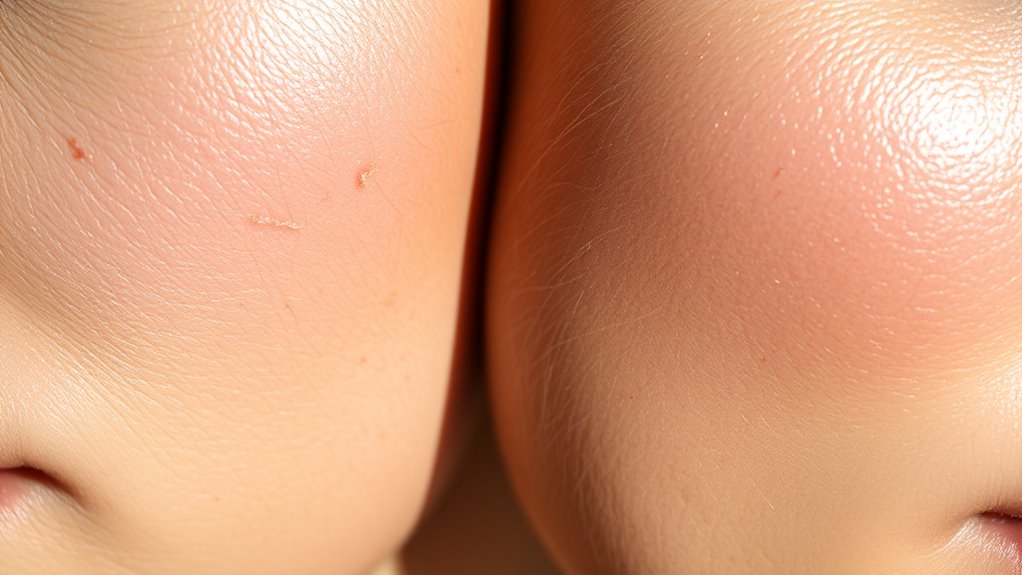Dry or Oily. How to Tell What Skin Type You REALLY Have
Imagine your skin as a delicate balance scale; one side tipped too far towards dryness and the other towards excessive oiliness. Identifying your skin type isn’t just essential for comfort, but crucial for effective skincare. After a gentle cleanse, how does your skin respond? What if those subtle clues could guide you towards the right products? Understanding your skin type can transform your routine, so let’s explore the key factors that define whether you’re dry or oily.
Understanding Skin Types
Understanding your skin type is essential for effective skincare.
To find your skin type, assess characteristics such as oiliness, dryness, and sensitivity.
Oily skin often appears shiny, while dry skin feels tight or flaky.
Combination skin displays traits of both.
Sensitive skin reacts negatively to products.
Identifying your skin type allows you to tailor your skincare routine for optimal results and improved skin health. Additionally, your skin type can be influenced by hormonal balances, reflecting how your overall health impacts your skin condition.
The Simple Wash Test
To determine your skin type accurately, you can perform the Simple Wash Test, which involves cleansing your face and observing its reaction over time.
Follow these steps:
- Wash your face with a gentle cleanser.
- Wait for an hour without applying any products.
- Assess how your skin feels: tight, oily, or balanced.
This test helps identify your skin’s natural state for better care decisions. Additionally, avoiding common skincare mistakes can help you maintain healthy skin and make the most of your results from this test.
Observing Oily vs. Dry Skin Traits
How can you tell if your skin is oily or dry? Observe your skin’s characteristics throughout the day.
Oily skin typically appears shiny, especially in the forehead, nose, and chin areas, while dry skin often feels tight and may flake.
You might notice enlarged pores or frequent acne with oily skin, whereas dry skin may lead to irritation and redness.
Professional Skin Assessment Options
If you’re seeking a definitive evaluation of your skin type, professional skin assessments offer valuable insights.
Here are three effective options:
-
Dermatologist Consultation: A specialist can analyze your skin’s characteristics and provide tailored recommendations.
-
Skin Analysis Machines: These devices assess hydration levels and oil production.
-
Facial Treatments: Expert estheticians can conduct thorough assessments during skin treatments, offering personalized feedback. Additionally, a comprehensive analysis can help identify if your skin is truly oily skin, allowing for a more effective skincare routine.
Tailoring Your Skincare Routine Based on Skin Type
Understanding your skin type lays the foundation for an effective skincare routine.
If you have dry skin, opt for moisturizers rich in emollients. For oily skin, choose lightweight, oil-free products.
Combination skin requires balance; use different products for distinct areas. Sensitive skin benefits from fragrance-free formulations. A simple routine tailored to your skin type ensures optimal hydration, protection, and overall health.

